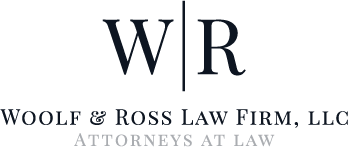Recent Blog Posts
Beware of Interrogation Procedures: Popular Method Produces False Confessions
 It is known as the Reid Technique, and it is widely used by law enforcement officials to produce a confession from a criminal suspect. The problem is, however, that while the technique may work well in getting a suspect to go along with the interrogator’s version of what took place, the truth is often muddied. In some cases, it can be considered completely irrelevant. So, why do police departments continue to use it and what can you do to avoid being talked into a false confession?
It is known as the Reid Technique, and it is widely used by law enforcement officials to produce a confession from a criminal suspect. The problem is, however, that while the technique may work well in getting a suspect to go along with the interrogator’s version of what took place, the truth is often muddied. In some cases, it can be considered completely irrelevant. So, why do police departments continue to use it and what can you do to avoid being talked into a false confession?
Reid Technique Basics
Unlike more confrontational interrogation methods, the Reid Technique is highly manipulative and relies heavily on human psychology. It begins with a behavior analysis based on a number of non-threatening questions to establish the subject’s baseline when telling the truth. Based on the results of the analysis, interrogators quickly get a sense of whether or not they believe the suspect to be lying about the act in question. At this point, the interrogator will typically leave the room and return in a few minutes an official-looking file.
Controversy Growing Over Causes of Shaken Baby Syndrome
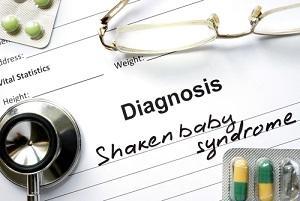 Over the last two decades, the phrase "shaken baby syndrome" has entered the modern medical lexicon as a way of describing head injuries sustained by an infant, presumably as the result of physical abuse. Allegations of abuse are usually focused on the child’s parents or caregivers, and, in most cases, it would seem that the symptoms could not possibly have been the result of anything else. A growing number of medical professionals, however, including one whose testimony provided the cornerstone of a landmark shaken baby trial in 1997 are beginning to question the assumption that all such symptoms are the result of criminal abuse.
Over the last two decades, the phrase "shaken baby syndrome" has entered the modern medical lexicon as a way of describing head injuries sustained by an infant, presumably as the result of physical abuse. Allegations of abuse are usually focused on the child’s parents or caregivers, and, in most cases, it would seem that the symptoms could not possibly have been the result of anything else. A growing number of medical professionals, however, including one whose testimony provided the cornerstone of a landmark shaken baby trial in 1997 are beginning to question the assumption that all such symptoms are the result of criminal abuse.
Abusive Head Trauma
While shaken baby syndrome has been a recognized diagnosis for a number of years, its colloquial-sounding name has been replaced by many professionals with the more clinical "abusive head trauma." Its symptoms are usually threefold: swelling of the brain, bleeding on the surface of the brain, and bleeding behind the eyes. Known as the triad, these symptoms alone have been accepted as evidence of criminal abuse or violence, despite the lack of accompanying bruises, contusions, or broken bones.
Mandated Review of Connecticut Sex Offender Registry Underway
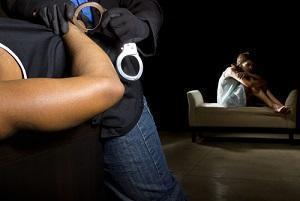 The application and development of laws and public policies pertaining to sex offenders are often a “very politically charged and emotionally charged issue,” according to Andrew Clark, acting executive director of the Connecticut Sentencing Commission. The Commission, thanks to a recently passed legislative measure, has been tasked with conducting a full review of the state’s sex offender registry and its effectiveness in promoting public safety. In order to do so, the Sentencing Commission has created a task force co-chaired by Robert Farr, former chair of the state Board of Pardons and Paroles and longtime legislator, and Stephen Grant, executive director court support services for the Connecticut Judicial Branch.
The application and development of laws and public policies pertaining to sex offenders are often a “very politically charged and emotionally charged issue,” according to Andrew Clark, acting executive director of the Connecticut Sentencing Commission. The Commission, thanks to a recently passed legislative measure, has been tasked with conducting a full review of the state’s sex offender registry and its effectiveness in promoting public safety. In order to do so, the Sentencing Commission has created a task force co-chaired by Robert Farr, former chair of the state Board of Pardons and Paroles and longtime legislator, and Stephen Grant, executive director court support services for the Connecticut Judicial Branch.
The State of the Sex Offender Registry
Connecticut’s sex offender registry was created by law in 1999 and now consists of more than 6,000 names in an online database. While it was designed to help alert the public about potentially dangerous sex criminals, critics maintain that the lack of organization and the use of unnecessarily complex language makes the list all but impossible for most citizens to utilize easily.
Dog Bites Injure Millions Every Year
 According to estimates from the Centers for Disease Control and Prevention, some 4.5 million Americans are bitten by dogs each year, with nearly 900,000 being serious enough to require medical attention of some kind. More than 1,000 per day require a visit to the emergency room or an inpatient admission, totaling more than 360,000 such visits per year. Unfortunately, children between the ages of 5 and 9 are at the highest risk for serious dog bites, and more than 40 percent of bite injuries are suffered by children 14 and under.
According to estimates from the Centers for Disease Control and Prevention, some 4.5 million Americans are bitten by dogs each year, with nearly 900,000 being serious enough to require medical attention of some kind. More than 1,000 per day require a visit to the emergency room or an inpatient admission, totaling more than 360,000 such visits per year. Unfortunately, children between the ages of 5 and 9 are at the highest risk for serious dog bites, and more than 40 percent of bite injuries are suffered by children 14 and under.
High-Risk Breeds
While certain demographic groups are more likely to be bitten than others, certain breeds of dog are statistically more likely to inflict serious injury. A recent analysis compiled by the editor of Animals 24-7 found that molosser breeds, including pit bulls, rottweilers, mastiffs, boxers, and sharpeis, account for a mere 9.2 percent total North American dog population, but inflict more than 85 percent of injury-causing attacks, including 81 percent of all attacks against children. In addition, molossers have been found responsible for more than three-quarters of the dozens of annual dog-bite fatalities. Of all the molosser breeds, pit bulls and pit bull mixes are the most quantifiably dangerous.
An Uninsured Driver Hits a Pedestrian: Now What?
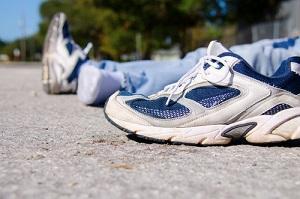 As a responsible adult, you have always made sure to remain in compliance with safety and liability laws especially as they relate your car and driving privileges. You keep your registration current, you wear your seatbelt and require passengers to wear theirs, you never drive under the influence, and you maintain full liability and collision insurance on your vehicle.
As a responsible adult, you have always made sure to remain in compliance with safety and liability laws especially as they relate your car and driving privileges. You keep your registration current, you wear your seatbelt and require passengers to wear theirs, you never drive under the influence, and you maintain full liability and collision insurance on your vehicle.
When you are behind the wheel, many of these concerns are well within your control. When you are a pedestrian, whether crossing the street or walking for miles, you are at the mercy of the drivers around you. If you are hit by a car as a pedestrian, your avenues for compensation may be rather unclear specifically if the driver is uninsured.
Know Your Options
As a "fault" insurance state, Connecticut provides those who have suffered losses in automobile crashes, including vehicle-pedestrian incidents, several methods for getting their losses covered. An injured party may choose to pursue a civil claim in the form of a personal injury lawsuit against the at-fault party. The assistance of a qualified lawyer can help ensure your claim is paid correctly.
Connecticut Court Issues Conflicting Ruling on Requirement to Show Pistol Permit
 According to the U.S. Centers for Disease Control and Prevention (CDC), some 33,000 deaths around the country each year are related to firearms. Considering such statistics, combined with the seemingly endless stream of high-profile shootings every few weeks, it should come as little surprise that the state of Connecticut and other jurisdictions take their gun control laws very seriously. A recent decision by a state Superior Court, however, suggests that following the letter of such laws may not be enough to keep some gun owners out of trouble.
According to the U.S. Centers for Disease Control and Prevention (CDC), some 33,000 deaths around the country each year are related to firearms. Considering such statistics, combined with the seemingly endless stream of high-profile shootings every few weeks, it should come as little surprise that the state of Connecticut and other jurisdictions take their gun control laws very seriously. A recent decision by a state Superior Court, however, suggests that following the letter of such laws may not be enough to keep some gun owners out of trouble.
Request to Show a Permit
A case before the Superior Court this past spring arose from an incident in 2013 when two men were walking on a public boardwalk openly carrying loaded handguns. A local police officer stopped the men and requested to see their permits. One of the men immediately complied, but the other refused, despite truthfully stating he had the permit on his person, later citing the officer’s lack of reasonable suspicion. The man was subsequently charged with interfering with police and had his permit revoked. The man successfully applied for reinstatement of his permit, a decision that was appealed to the Superior Court by the Commissioner of the Department of Emergency Services and Public Protection (DESPP).
Connecticut Senator Leads Effort to Strengthen Animal Cruelty Prosecution
 The tragic stories are everywhere, and they seem to be hitting headlines with regularity. In late August, a Massachusetts woman who worked as a dog trainer in Connecticut was charged with 29 counts of animal cruelty. Earlier in the month, a Texas law enforcement officer was fired amidst allegations of negligence when his police dog was left in his patrol car and died.
The tragic stories are everywhere, and they seem to be hitting headlines with regularity. In late August, a Massachusetts woman who worked as a dog trainer in Connecticut was charged with 29 counts of animal cruelty. Earlier in the month, a Texas law enforcement officer was fired amidst allegations of negligence when his police dog was left in his patrol car and died.
Despite the widespread occurrences, cases of animal cruelty can be challenging to prosecute as state laws differ greatly, and no current federal statute exists expressly prohibiting cruelty to animals. Senator Richard Blumenthal of Connecticut is looking to change that, as proposed legislation in Washington would make animal torture a federal crime and a felony.
Federal Push
Several years ago, the United States Congress outlawed the selling of videos depicting animal cruelty and torture but stopped short of criminalizing the acts themselves at a federal level. In 2014, Senator Blumenthal was at the forefront of the effort to amend the nation’s animal fighting laws, making it illegal to attend or bring a child to a cockfight or a dogfight. Now, the Democratic senator is looking to close the loophole many believe Congress left in 2010, as is a principal co-sponsor of a bipartisan bill known as the Prevent Animal Cruelty and Torture Act, or PACT Act.
Putting it All Together: An Accident Reconstructionist Can Be a Valuable Asset
 The ensuing chaos after any motor vehicle accident can lead to a great deal of missed or lost information. Addressing injuries and clearing the roadways sometimes take precedence over definitively establishing what happened and the factors that may have contributed to the accident. This can be especially true when the accident involves large trucks or semitrailers.
The ensuing chaos after any motor vehicle accident can lead to a great deal of missed or lost information. Addressing injuries and clearing the roadways sometimes take precedence over definitively establishing what happened and the factors that may have contributed to the accident. This can be especially true when the accident involves large trucks or semitrailers.
The loss of information at the scene can present a number of challenges for you if you have been hurt in an accident, but fortunately, help may be available from a qualified personal injury attorney. In some cases, your attorney may employ the services of an accident reconstructionist to help determine what caused your injuries and the parties that should be held liable.
Truck Accidents are Different
While they may seem similar to a casual observer, car accidents and truck accidents are not the same. Car accidents, while certainly dangerous and potentially deadly of their own accord, are relatively straightforward as the physical characteristics of cars are fairly simple. Large trucks, conversely, are complicated machines that in addition to being significantly bigger,can weigh up to 20 times more than a full-size passenger sedan. The physics involved in large truck accidents are infinitely more complex and competently analyzing a truck accident involves comprehensive training.
Hit-and-Run Accidents: Finding the Liable Party
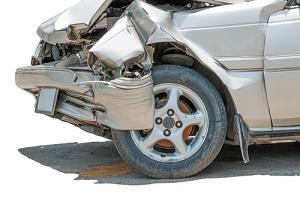 The moments after an auto accident can be extremely chaotic. Under the best of circumstances, you are likely to be disoriented, confused, possibly injured, and very upset. The situation can be made even worse if the other driver—especially if he or she caused the accident—suddenly drives off, leaving you literally in the middle of road, responsible for cleaning up the mess. Leaving the scene of an accident is against the law, but as the victim of a hit-and-run accident, recovering the damages caused is probably more important to you than criminal prosecution.
The moments after an auto accident can be extremely chaotic. Under the best of circumstances, you are likely to be disoriented, confused, possibly injured, and very upset. The situation can be made even worse if the other driver—especially if he or she caused the accident—suddenly drives off, leaving you literally in the middle of road, responsible for cleaning up the mess. Leaving the scene of an accident is against the law, but as the victim of a hit-and-run accident, recovering the damages caused is probably more important to you than criminal prosecution.
Quickly Regain Composure
As it becomes clear to you that the driver who caused the accident has fled the scene, it is important to take control of the situation, if possible. Try to clear your head and do your best to postpone the inevitable flood of anger and resentment. There will be time for an emotional response later, but in the moment you need to gather as much information as you can quickly. If you have been seriously injured, try to communicate the situation to police or responders so that they can take appropriate action on your behalf.
Supreme Court to Decide Warrantless Mobile Phone Tracking Limits
 Most Americans understand the general protections offered by the Fourth Amendment to the U.S. Constitution. Its provisions are meant to guarantee the security of people, their homes, papers, and effects against unreasonable searches and seizures. Only a warrant, based on probable cause, is to give the government the power to override a person’s right to privacy.
Most Americans understand the general protections offered by the Fourth Amendment to the U.S. Constitution. Its provisions are meant to guarantee the security of people, their homes, papers, and effects against unreasonable searches and seizures. Only a warrant, based on probable cause, is to give the government the power to override a person’s right to privacy.
The digital age, however, continues to offer new and increasingly ambiguous challenges to the application of law enforcement as it pertains to the Fourth Amendment. The latest example, involving the use of mobile phone records without a warrant, is now headed to the U.S. Supreme Court, a case that is likely to set a precedent for many future decisions.
United States v. Quartavious Davis
Earlier this year, a federal appeals court in Florida ruled that the use of cell phone records obtained by court order did not violate a criminal defendant’s Fourth Amendment rights. The Eleventh Circuit Court of Appeals reversed a lower court’s decision, relying on precedents set long before the proliferation of mobile technology. The court held that, by making phone call, a person gives up certain expectations of privacy, as determined by the U.S. Supreme Court’s 1979 decision in Smith v. Maryland.


